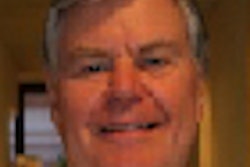
"Thinking is easy, acting is difficult, and to put one's thoughts into action is the most difficult thing in the world."
— Johan Wolfgang von Goethe (1749-1832)
Discussions about lack of access to dental care for poor, elderly, and rural people have been taking place for years. The back and forth has not provided solutions to the problem.
 William T. Brown, DDS
William T. Brown, DDS
Sen. Bernie Sanders (I-VT) has introduced legislation to solve the problem with a transformation of the delivery of dental care. Sanders and his co-sponsor, Rep. Elijah Cummings (D-MD), say "the groups that need the care most are the least likely to get it."
As chairman of the Senate Subcommittee on Primary Health and Aging, Sanders reports that "130 million Americans have no dental insurance, one-quarter of U.S. adults age 65 or older have no teeth, and 17 million low-income children do not see a dentist in a year."
His answer is to extend comprehensive dental coverage to millions of Medicare, Medicaid, and Department of Veteran Affairs healthcare beneficiaries, combined with expanding a vast network of federally qualified community health centers to territories determined to be deficient.
The one-size-fits-all approach of a federally mandated national network of dental clinics to treat the ravages of disease is a laudable objective. However, it misses the fact that we can realistically prevent the problem.
A better premise
In my opinion, this radical and expensive legislation is based on an obsolete premise; drilling, filling, and pulling have been tried before, and it doesn't work. For example, the U.K.'s National Health Service implemented this model and found that the final solution was pulling everyone's teeth. According to a shocking report in a Bristol newspaper, 11-year-old girls had full-mouth extractions and dentures.
But it isn't necessary to look outside our own borders. The current U.S. Medicaid system for dentistry has people go for extractions because what it covers directs patients to that end.
The question I would ask the senator is, "If your house were on fire, whom would you call first, the firemen or the carpenters?" The obvious answer is the firemen.
The ultimate answer is PREVENTION. The future of all healthcare is self-help, instead of reactionary.
Here is an analogy I use with patients: If you leased an automobile for two or three years, you might change the oil. However, if you were given a car at age 15 and told this would be the only car you could have for the rest of your life, what kind of preventive maintenance would you perform? You would probably change the air in the tires.
Predictable = preventable
Unlike systemic health, dental disease is predictable. Dental science and technology have determined the cause and prevention of decay and periodontal disease. Bacterial plaque initiates dental disease; all other factors merely complicate or contribute to the disease process started by bacterial plaque. Everyone has plaque -- even you. Therefore, disease is developing unless the bacterial plaque is managed daily.
In my experience, patients can be educated to understand their enemy and taught the skills necessary to control caries and periodontal disease, except in unmanageable areas. The education can be conducted on a large scale, not merely one-on-one.
The dental profession must be the leader in educating the American public to control our most common disease. We need to make clear to the public that we are trying to put our profession out of business. This is a different image that has evolved in the past couple of decades. The action of reaching out in a humanitarian manner could go a long way in re-establishing public trust recently suffered by dentistry.
From my 50 years' experience of educating clients from diverse socioeconomic backgrounds, accepting responsibility for their dental disease is a gift that keeps on giving.
What standards must be met?
- High-quality emergency care given quickly and pleasantly with a minimum of red tape.
- Aid goes where the needs are greatest rather than where the results are.
- Recipients, sponsoring agencies, and participating dentists and staff must develop goals and purposes for the program consistent with the wants and needs of the recipients.
- Dealing with family units to successfully develop a patient's philosophy of dental health and integration of preventive practices into daily life.
- Develop the family's sense of responsibility for each member's own health.
- Comprehensive examination and diagnosis by a qualified dentist.
- Dental disease-control teaching for those who want it. This will include:
- Long-range disease-control checks to maintain health.
- Nutritional counseling for rampant caries or periodontal disease.
- Regular topical fluoride under supervision.
(The list of standards is from Robert Barkley's Successful Preventive Dental Practices, specifically from the chapter "A Philosophy of Indigent Dental Care," plus my additions.)
A national initiative led by the dental profession to address the problems stated by well-meaning legislators could be fruitful on many levels. The most important would be making a major contribution to our contract with society.
A new model for omnibus preventive dental practice could give the dentist a bonus for caries- and periodontal-disease-free patients. What a concept!
The major benefits of the effort will accrue to the public.
William T. Brown, DDS, practices in Des Moines, IA. He started his blog, Dental Intelligence, in 2010 to share information and experiences that have fundamentally changed the way dentistry is practiced.



















